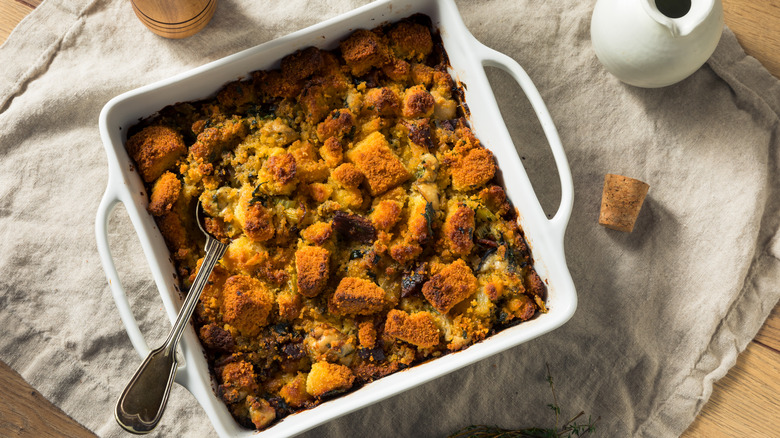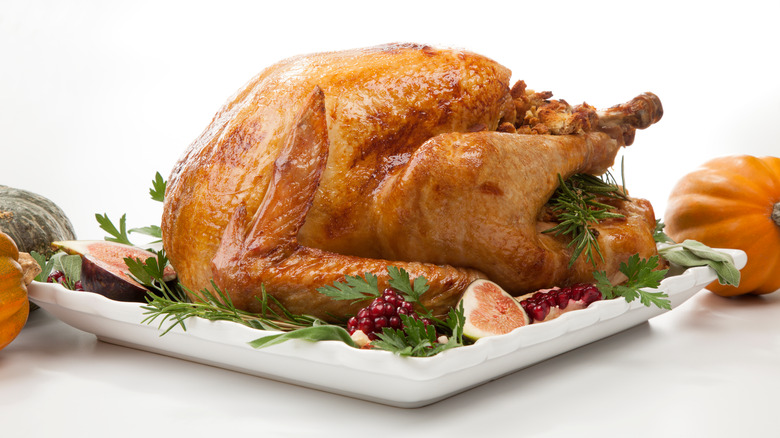The Real Reason Stuffing Shouldn't Go Inside Of A Turkey
As stuffing has been around since the Middle Ages, you would think that humankind has gotten its preparation down to a science. This is mostly true; we have used cornbread, fruit, sausage, oysters, and other foods to create different stuffings. We have experimented with seasoning and aromatics.
However, even with hundreds of years of stuffing under our belts, we are still making some pretty big mistakes. Some might argue that putting stuffing inside a turkey is a major mistake in and of itself, but that is not what we're talking about here. (But thank you, Bustle, stuffing is soggy bread.)
If you are dedicated to having stuffing alongside your holiday feast (or any feast, we won't judge), there are a few things you will want to consider. After all, if you're going to put in all that work, we want you to get the most out of your stuffing experience.
Concerns about stuffing a turkey
If you cook, you're probably well aware of the potential dangers of improperly cooked meat. While stuffing isn't meat, it's going inside meat. You might think that all the turkey juices dripping into your stuffing sounds heavenly, but it can actually be a health hazard.
According to MyRecipes, the turkey doesn't always get hot enough while cooking to kill off the bacteria in its cavity. Stuffing inside a turkey might just be a breeding ground for salmonella and food poisoning. Nothing kills the mood like food poisoning.
So now what? Easy-peasy, lemon squeezy. Instead of stuffing your turkey with, well, stuffing, you can use the cavity for seasonings like citrus and spices. These seasonings won't be eaten, so you don't need to worry about them collecting bacteria.
You can then cook your stuffing in a casserole dish or pan. This setup makes the stuffing much more accessible for seasoning. No one likes to change traditions, but this is one change you'll definitely want to make.

